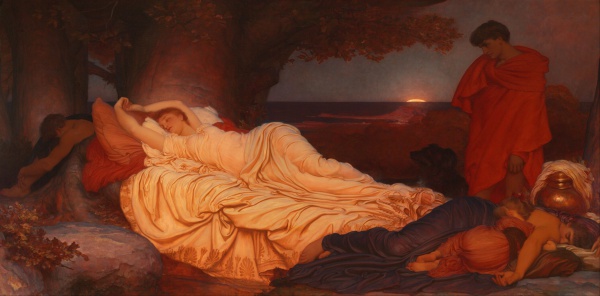Facts About Cymon and Iphigenia
Frederic Leighton's "Cymon and Iphigenia" is a mesmerizing oil on canvas that initially captivated audiences at the Royal Academy of Arts in London in 1884. Fast forward to 1976, and this masterpiece found a new home at the Art Gallery of New South Wales in Sydney, Australia, after being acquired at a Christie's auction in London.
The painting vividly depicts a scene from Giovanni Boccaccio’s "The Decameron." It illustrates the moment when Iphigenia is peacefully sleeping in the woods, and Cymon, a young nobleman, stumbles upon her. Enchanted by her beauty, Cymon experiences a profound transformation. This captivating piece took Leighton eight months to complete, with the artist meticulously planning every detail to achieve the ideal composition and atmosphere.
Measuring 163 by 328 centimeters (or 64 by 129 inches), the painting is a grand portrayal of the transformative power of beauty. Leighton expertly creates an autumnal setting, evoking a sense of drowsiness just before sleep. Iphigenia is depicted with her arms elegantly raised above her head, surrounded by other sleeping figures and a dog, highlighting Leighton’s skill in conveying tranquility and unconsciousness.
"Cymon and Iphigenia" has been showcased at various prestigious venues, including the Royal Academy of Arts in London and the Guildhall Art Gallery. Before its relocation to Sydney, it changed ownership several times within the UK. The painting was also featured in a dedicated Leighton exhibition at the Royal Academy in 1996. Intriguingly, a color study of this very painting was also acquired by the Art Gallery of New South Wales in 1986.
This work remains a highlight of Leighton’s oeuvre, celebrated for its exquisite composition, beauty, and narrative skill.
